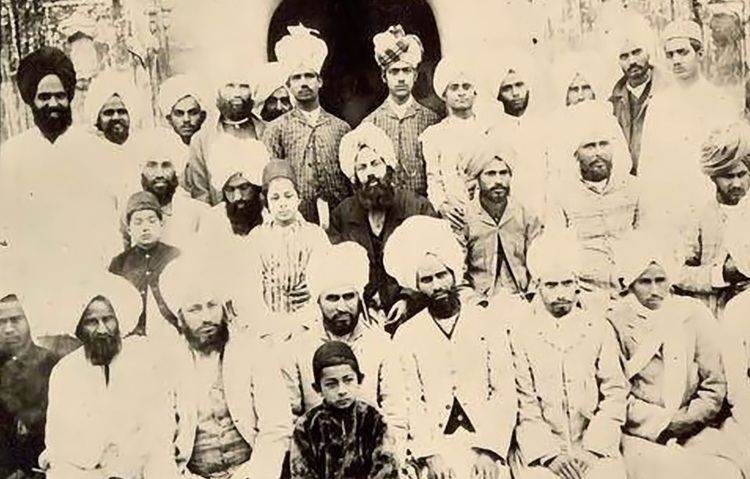Country India Language spoken District | State | |
 | ||
University Talim-ul-Islam College | ||
Map of Qadian
Qadian is the 4th largest town and a municipal council in Gurdaspur District, north-east of Amritsar, situated 18 kilometres (11 mi) north-east of Batala city in the state of Punjab, India.
Contents
- Map of Qadian
- Ahmadiyya qadiani worship place sealed in pakistan for blasphemy acts urdu
- Views of students about qadianis ahmadies and other minorities in pakistan must see
- History
- As Ahmadiyya Centre
- Geography
- Demographics
- Notable people from Qadian
- Religious Leaders
- Poets
- Military Leaders
- Politicians
- Health Service Providers
- Education
- Notable monuments
- Haram food for the body mind soul placing azadari over amal maulana syed muhammad rizvi
- References

Qadian is perhaps best known as the birthplace of Mirza Ghulam Ahmad, the founder of the Ahmadiyya Islamic movement. It remained the centre of the Ahmadiyya movement until the Partition of India in 1947.
Ahmadiyya qadiani worship place sealed in pakistan for blasphemy acts urdu
Views of students about qadianis ahmadies and other minorities in pakistan must see
History
Qadian was established in 1530 by Mirza Hadi Baig, a religious scholar dedicated to Islam and the first Qazi within the area. Mirza Hadi Baig was from a royal household of Mirza of the Mughal Empire. He migrated from Samarkand and settled in Punjab. He was a descendant of King Timur and related to King Babur, who have him 80 villages by. Because of his religious beliefs, he named the center of the 80 villages 'Islam Pur Qazi' and governed from there. Over time, the name of the town changed to 'QaziMaji' ('Maji' means 'bull', referring to the animal still found in abundance in Qadian). Later, it was called just 'Qadi' and eventually became known as 'Qadian'.
Qadian and the surrounding areas later fell to the Ramgharia Sikhs who offered the ruling Qazis, two villages which they refused. In 1834, during the rule of Maharaja Ranjit Singh, the region consisting of Qadian and five adjoining villages was given to Mirza Ghulam Murtaza, father of Ghulam Ahmad in return for military support in Kashmir, Mahadi, the Kulu valley, Peshawar and Hazara.
As Ahmadiyya Centre
A remote and unknown town, Qadian emerged as a centre of religious learning in 1889, when Mirza Ghulam Ahmad established the Ahmadiyya Muslim community, and in 1891 it became the venue for the community's annual gatherings. Qadian remained the administrative headquarters and capital of the Ahmadiyya Caliphate until the partition of India in 1947, when much of the community migrated to Pakistan. Following the partition, Mirza Mahmood Ahmad, the second Khalifa of the community, carefully oversaw the safe migration of Ahmadis from Qadian to the newly founded state, instructing 313 men, including two of his own sons, to stay in Qadian and guard the sites holy to Ahmadis, conferring upon them the title darveshān-i qādiyān (the dervishes of Qadian) and eventually moving the headquarters to Rabwah, Pakistan.
Geography
Qadian is located at 31.82°N 75.39°E / 31.82; 75.39. It has an average elevation of 250 metres (820 feet).
Demographics
As of India's census in 2013, Qadian had a population of 40,827. Males constituted 54% of the population and females 46%. Qadian has an average literacy rate of 75%, slightly higher than the national average of 74.04%: male literacy is 78%, and female literacy is 70%. 10% of the population is under 6 years of age.
Before the partition of India, the town of Qadian had a majority Muslim population because of the many religious materials belonging to the Islamic faith. Since 1947, Qadian's population is mostly Sikh or Hindu: Prajapatis (Kumhar), Bhatias, Brahmins, Arya Samajis and Bajwas (most of whom migrated from Pakistani Punjab during partition); as Bajwas came from Kalaswala Punjab (now in Pakistan— Kalaswala Khalsa School Qadian there is named in memory of Qadian) based with some members of the Ahmadiyya Muslim Community staying behind to care for the community's buildings and mosques. The vast majority of the community migrated to Pakistan during the partition of India.
During the partition of India. The Prime Institute Sikh National College was shifted from Lahore to Qadian. Many famous names are involved with this College (see next section).
Notable people from Qadian
Although Qadian is relatively remote and has a very small population, it has many notable historical, religious and political figures;
